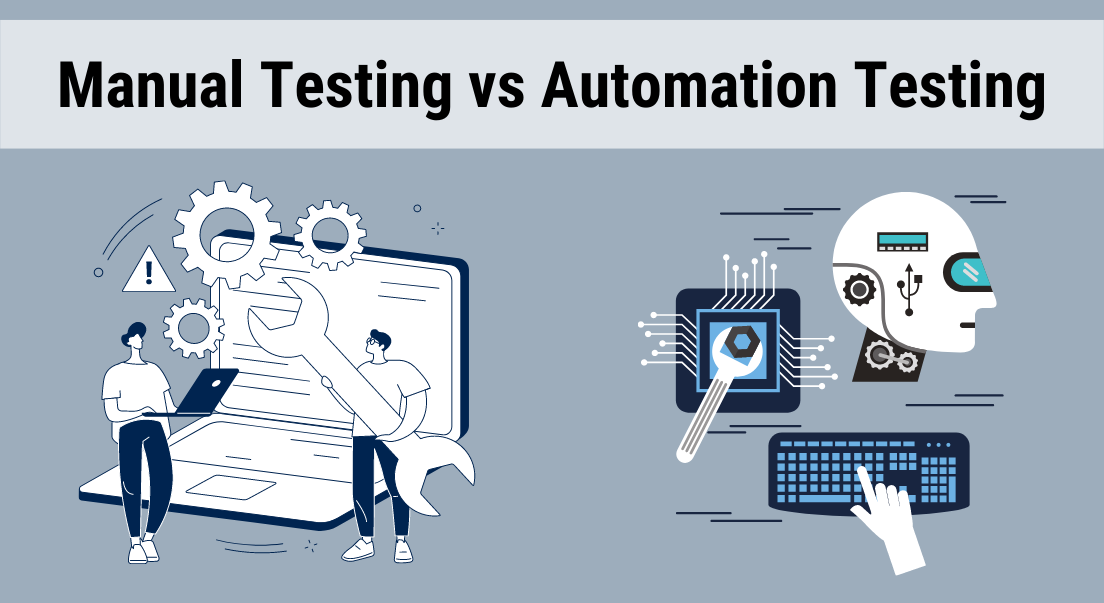Exactly How Automation Testing Reinvents Quality Control Processes
From Handbook to Automated Testing: A Comprehensive Overview to Transitioning Efficiently and Effectively
In the world of software program screening, the shift from handbook to automated processes has become a significantly crucial shift for companies looking for to improve effectiveness and precision in their testing practices. The trip from guidebook to automated testing is not without its challenges, however when come close to purposefully and with a clear strategy in mind, the benefits can be substantial.
Benefits of Automated Checking
Automated testing offers various benefits, boosting performance and accuracy in software growth procedures. Automated tests can be run simultaneously on numerous tools and operating systems, significantly speeding up the screening stage contrasted to manual screening.
Additionally, automated screening guarantees a higher degree of precision in discovering flaws. Consistency in testing is also boosted, as automated tests carry out the exact same actions exactly each time they are run.
Picking the Right Devices

To start with, assess your needs and purposes. Recognize the extent of your task, the technologies involved, and the ability of your group. This analysis will assist you figure out the abilities and features you call for in your screening devices.
Second of all, take into consideration the compatibility of the tools with your existing systems and processes. Seamless assimilation with your current software advancement lifecycle is necessary to make sure a smooth change to automation.
In addition, evaluate the scalability and versatility of the devices. As your screening needs evolve, the devices must be able to adapt and accommodate adjustments efficiently.
Last but not least, consider the support and community around the tools. Robust support and an energetic user neighborhood can supply beneficial sources and aid when carrying out automated testing. By carefully considering these elements, you can select the right tools that align with your demands and set the phase for a successful change to automated testing.
Composing Reliable Test Manuscripts

When crafting examination scripts, it is vital to take into consideration the particular needs of the software application being examined and make sure that the manuscripts deal with all critical performances. Clear and descriptive calling conventions for test manuscripts and examination cases can boost readability and maintainability. Furthermore, including error handling systems within the examination manuscripts can assist in determining and resolving issues quickly.
Additionally, arranging examination scripts into modular parts can boost reusability and scalability, decreasing redundancy and boosting performance in test script upkeep. Normal testimonials and updates to test scripts are critical to keep pace with progressing software program requirements and functionalities. By complying with these principles, testers can produce durable and reliable examination scripts that contribute substantially to the success of automated screening procedures.
Integrating Automation Into Workflows
Efficient integration of automation tools into existing workflows improves and enhances procedures performance More hints within software program growth cycles. When including automation right into operations, it is critical to recognize recurring jobs that can be automated to conserve time and lower human mistake. By flawlessly incorporating automated screening devices like Selenium or Appium right into the software application growth lifecycle, teams can achieve faster comments on code modifications, resulting in quicker bug detection and resolution. This combination enables constant testing throughout the advancement process, guaranteeing that any issues are determined beforehand, causing greater software program quality. Furthermore, automation can be utilized to set off tests automatically after each code commit, providing immediate validation and maximizing testers to concentrate on more facility circumstances. Appropriate combination of automation tools calls for cooperation in between growth, screening, and procedures groups to establish a unified workflow that optimizes effectiveness and efficiency in supplying high-grade software program items.
Making Sure a Smooth Transition
Efficiently transitioning to automated testing includes thorough preparation and cautious implementation to lessen disruptions and make the most of performance in the software growth procedure - automation testing. To guarantee a smooth change, it is necessary to begin by conducting a detailed assessment of the existing screening processes and determining locations where automation can bring the most considerable advantages. Engaging with all stakeholders at an early stage at the same time, including programmers, testers, and project managers, is critical for gathering assistance and buy-in for the automation initiative
Communication is vital throughout this change stage. Clear interaction of the objectives, advantages, and assumptions of automated screening helps to take care of any kind of resistance or concerns that may occur. Furthermore, supplying ample training and sources for employee to upskill in automation tools and methods is essential for great post to read guaranteeing a successful shift.

Verdict
To conclude, transitioning from manual to automated testing provides many advantages, consisting of raised efficiency and reliability. By selecting the suitable devices, composing reliable examination scripts, and integrating automation perfectly right into operations, companies can guarantee a smooth and successful change. It is necessary to accept automation as an important property in software testing procedures to boost total top quality and performance.
In the world of software application screening, the shift from manual to automated procedures has actually come to be an increasingly vital change for companies website here looking for to boost effectiveness and accuracy in their testing practices. Automated examinations can be run all at once on numerous gadgets and operating systems, significantly speeding up the testing stage compared to hands-on testing. Consistency in testing is also improved, as automated tests execute the very same actions exactly each time they are run.To make sure the successful application of chosen testing tools, the creation of effective examination manuscripts plays an essential duty in verifying the performance and performance of automated processes - automation testing. By adhering to these concepts, testers can create durable and reliable test scripts that contribute substantially to the success of automated testing processes